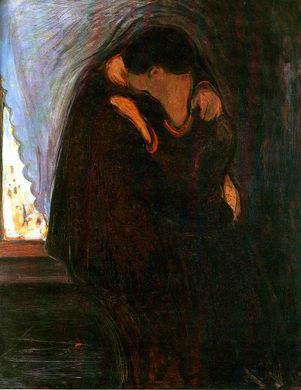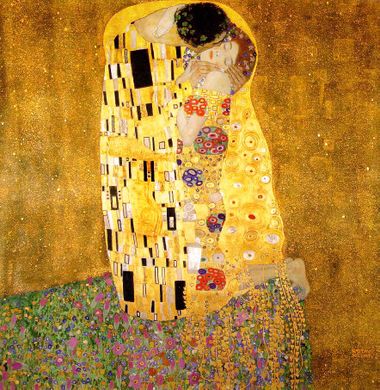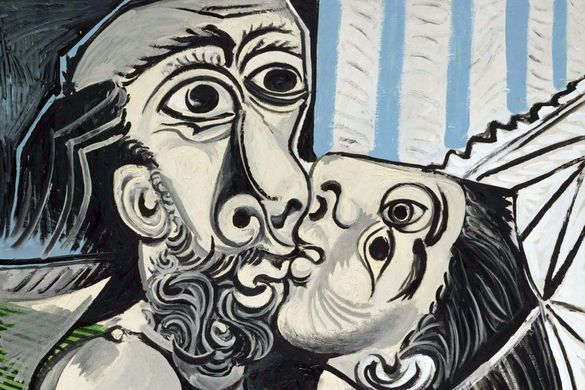The origin of kissing dates back more than three thousand years. Science still can’t give a precise answer why people are kissing. In ancient times, it was believed that through a kiss, lovers gave each other pieces of their souls. Unfortunately, in our days, when everything is much simpler, and one can find the love of his life on some Ukrainian dating site, a kiss has somewhat lost its intimacy.
The world’s renowned artists and sculptors perpetuated this symbol of the warmest feelings in their works. Here are the most famous kisses in the history of art.
Francois Boucher ‘Hercules and Omphale,’ 1732-1734
The plot for the canvas ‘Hercules and Omphale’ is taken from the ancient Greek series of myths about Hercules. The gods sent him to serve the Lydian Queen Omphale, who came up with humiliating trials for the hero now and then. In his work, Boucher turned Hercules’s hatred into passion, portraying a fairly candid scene of him seducing Omphale.
Antonio Canova ‘Psyche Revived by Cupid’s Kiss,’ 1787-1793
The Venetian sculptor Antonio Canova created two variants of this sculpture. The plot is based on the work of the ancient Greek writer Apuleius. Psyche plunges into a deep sleep, and Cupid descends to earth to revive his loved one.
Auguste Rodin ‘The Kiss,’ 1882
Auguste Rodin’s ‘The Kiss’ is a monument to the forbidden and eternal love of Francesca da Rimini and her beloved Paolo – the heroes of the Divine Comedy. The sculpture was ambiguously apprehended by critics, who considered it too frank for a general exposition. Therefore, during the exhibition in Chicago in 1893, the work was placed in a separate room, where the audience could get by appointment.
From our partners:
Dante Gabriel Rossetti ‘Paolo and Francesca da Rimini,’ 1867
English poet and artist Dante Gabriel Rossetti (one of the founders of the Pre-Raphaelite movement) also admired the love story of Francesca da Rimini and Paolo. It’s known that Francesca’s prototype is Rossetti’s deceased wife, the British poet Elizabeth Siddal.
Jean Leon Gerome ‘Pygmalion and Galatea,’ 1890
When creating this picture, the French artist Jean-Leon Gerome got inspiration from the ancient Greek myth telling about a sculptor’s love for his creation. Pygmalion falls in love with the sculpture of Galatea, carved from ivory, and asks Venus to bring her to life. Gerome recreated the first kiss of lovers after Galatea comes to life.
Edvard Munch ‘The Kiss,’ 1897

The author depicts his lovers kissing at the window in a cozy evening atmosphere. They seem to be hiding from the whole world behind a thin curtain. Who knows, maybe they have a discreet affair and don’t want anyone to see them. The author deliberately didn’t make their faces detailed: both lovers merge into a single color spot.
Gustav Klimt ‘The Kiss,’ 1907-1908

For this work, the Austrian symbolist used his signature technique, mixing gold leaf and oil paints. Some art historians believe that the canvas portrays the artist himself and his beloved Emilia Fløge.
Rene Magritte ‘The Lovers,’ 1928
Magritte tried to make the viewer reflect on the meaning of the picture, so all of his works resemble picturesque puzzles. ‘The Lovers’ had seen many interpretations. The artist portrayed love as something dazzling. In a fit of passion, lovers aren’t able to notice anything around, including each other’s flaws.
Pablo Picasso ‘The Kiss,’ 1969
This is one of the later works of the Spanish artist. It’s believed that Picasso portrayed himself and his second wife Jacqueline on the canvas.

Jean Auguste Dominique Ingres ‘Paolo et Francesca,’ 1819
French artist Jean Auguste Dominique Ingres devoted a few works to the story of Francesca da Rimini and Paolo. Just like Rodin, he drew inspiration from the Divine Comedy.













